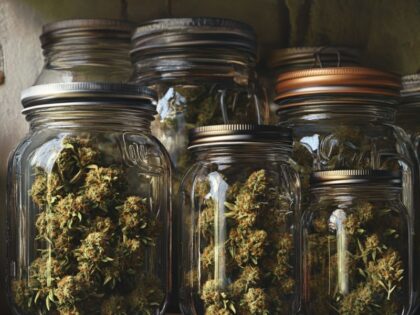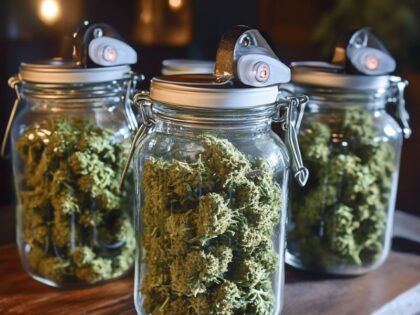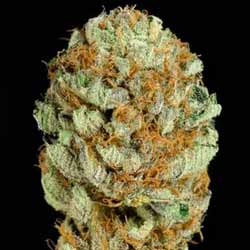How to Cure Cannabis: 7 Essential Things to Know for Newbies
Curing cannabis is a crucial step that can significantly enhance the flavor, potency, and overall quality of your harvest. For beginners, understanding the basics of the curing process ensures your cannabis is properly dried, stored, and preserved for smooth smoking and long-term enjoyment.
Table of Contents
What is Cannabis Curing?
Cannabis curing is the slow, controlled process of aging and drying harvested cannabis buds to preserve cannabinoids and terpenes while reducing moisture content. Unlike quick drying, curing allows the buds to develop smoother smoke, richer aroma, and enhanced potency.
It typically involves storing dry cannabis in airtight containers like mason jars and monitoring humidity levels over several weeks to achieve a proper cure. This step is essential in cannabis cultivation to ensure your weed is not only potent but also flavorful and long-lasting.
How to Cure Cannabis Properly
To cure cannabis the right way, you’ll need to follow a controlled, step-by-step process that protects your buds and enhances their quality. Here’s a breakdown of everything you need to get started and succeed.
Required Materials
To ensure a smooth curing process, prepare these essential tools:
- Mason jars or airtight containers – for storing dried cannabis buds.
- Hygrometers – to monitor humidity levels inside your curing jars.
- Drying racks or clotheslines – for the initial hang drying phase.
- Scissors or trimmers – to remove sugar leaves and prepare buds.
- Gloves – to avoid contaminating or damaging trichomes.
Important Numbers to Consider
Understanding the right timing and environmental conditions is key to properly cure your weed:
- Temperature: Keep curing room between 60–70°F (15–21°C).
- Humidity: Maintain 55–65% relative humidity inside containers.
- Drying time: 5–10 days before starting the curing stage.
- Curing period: Minimum of 2 weeks; 4–8 weeks is ideal for a smooth smoking experience.
- Burping schedule: Open containers for a few minutes daily during the first 1–2 weeks.
Drying Methods
Before curing, you need to dry your cannabis flowers properly. Here are common methods:
- Hang drying: Hang trimmed cannabis plants or branches upside down in a dry room.
- Drying racks: Spread buds out on mesh racks in a dark, well-ventilated space.
- Box drying: Place buds in cardboard boxes lined with paper for smaller batches.
Each drying method affects humidity differently. For example, hang drying in a humid climate may need dehumidifiers, while dry climates may require humidifiers to prevent overly dry buds.
Environmental Requirements
The right environment ensures a proper cure:
- Darkness: Keep jars or containers away from light to protect cannabinoids and terpenes.
- Airflow: Ensure fresh air circulation in the drying area.
- Cleanliness: Use sanitized tools and containers to avoid mold or contamination.
- Humidity control: Use Boveda packs or similar products if levels fluctuate.
Ideal Containers

Storing your cannabis in the right container preserves quality:
- Glass jars: Mason jars are preferred for being airtight and non-reactive.
- Plastic is a no-go: It can leach chemicals and affect the curing process.
- Size matters: Use jars that fit your buds snugly without overpacking them.
- Opaque options: If possible, use colored glass jars to reduce light exposure.
Monitoring the Curing Process
Keep an eye on your curing timeline with these general stages:
- Week 1–2: Burp jars daily; check for moisture and smell changes.
- Week 2–3: Burp every 2–3 days; buds begin to develop richer aroma.
- Week 4: Aroma, taste, and smoothness start to improve.
- Week 6–8: Buds are properly cured; smoke is smooth and flavors are enhanced.
- Beyond 8 weeks: Optional longer curing for connoisseurs or specific strains.
Additional Tips
These bonus tips help ensure the best drying and curing results:
- Trim buds after drying to retain terpene content.
- Avoid over-drying during the initial phase to preserve flavor.
- Label jars with strain names and curing start dates.
- Store your cannabis in a cool, dark place after curing is complete.
- Don’t rush – curing cannabis is vital to getting top-shelf quality.
Benefits of Curing Cannabis
Curing cannabis goes beyond simply drying buds — it unlocks the plant’s full potential. A proper cure enhances quality, ensures longevity, and makes every session more enjoyable. Here are the key benefits:
Enhances Flavor and Aroma
Curing allows terpenes to fully develop, giving your cannabis a richer, more complex scent and taste. Properly cured buds often feature distinct notes like citrus, pine, or earth that would otherwise be lost with fast drying.
Improves Smoothness
Raw, uncured buds can be harsh and irritating when smoked. Through curing, chlorophyll and other unwanted compounds break down, resulting in a smoother, less abrasive smoke or vapor.
Boosts Potency
While curing doesn’t directly increase THC, it preserves cannabinoids and terpenes that contribute to overall potency and effects. It prevents THC degradation and maintains its full psychoactive potential.
Prevents Mold and Spoilage
Curing cannabis properly reduces moisture in a controlled way, lowering the risk of mold growth. Buds that are too wet or stored incorrectly can rot, making them unusable.
Extends Shelf Life
Well-cured cannabis can last for months — even up to a year — without losing potency, flavor, or aroma. Properly dried and cured buds remain fresh longer when stored in airtight containers.
Maximizes Value of Your Harvest
If you’re growing cannabis, curing ensures that your hard work pays off. It helps you get the most out of your cannabis flower, especially if you plan to share, sell, or store your product.
How Long Does Marijuana Curing Take?

The length of marijuana curing can vary depending on your desired quality and patience. At a minimum, the curing process should take two weeks, but many growers prefer a longer curing period of 4 to 8 weeks for superior results.
Short curing — usually 1 to 2 weeks — can make buds smokable, but they may still retain a grassy smell, rough texture, or harsh smoke due to lingering chlorophyll and moisture. On the other hand, long curing allows the slow breakdown of residual compounds, stabilizing humidity levels and enhancing the aroma, flavor, and potency of your cannabis buds. In fact, some connoisseurs extend curing up to 12 weeks or longer to achieve a perfect cure that brings out deep terpene complexity and smooth smoking.
The key is to keep buds in airtight containers at ideal humidity levels, monitor them regularly, and give the curing process enough time to naturally refine your freshly harvested cannabis into premium-quality flower.
Final Thoughts
Curing cannabis is an essential step that transforms freshly harvested buds into smooth, flavorful, and potent flower. By following the right methods, using the proper tools, and giving the process enough time, even beginners can achieve a proper cure that improves the quality of their cannabis and maximizes the rewards of their cultivation efforts.
Frequently Asked Questions
How can I tell if my buds are too moist to cure?
If your buds feel damp, spongy, or stick together in the jar, they likely still contain too much moisture. A hygrometer reading above 70% RH is a sign they need more drying before curing.
Can I speed up the curing process?
Speeding up curing is not recommended. Rushing it can lead to harsh smoke, poor aroma, and lost terpenes. A slow, steady cure is essential for quality results.
Should I cure trimmed or untrimmed buds?
You can cure either, but many growers prefer trimming before curing to reduce moisture and simplify storage. Some wait to trim until after curing to preserve trichomes.
Is it necessary to cure cannabis for edibles?
While not required, curing cannabis used in edibles can still improve flavor and potency by preserving cannabinoids and reducing chlorophyll bitterness.
Can curing fix overdried buds?
Curing won’t fully revive overdried buds, but adding a humidity pack to your jar may help restore some moisture and improve texture slightly.
Do different strains require different curing times?
Yes, dense or high-resin strains may benefit from longer curing times, while lighter, fluffier strains may be ready sooner. Always monitor aroma, feel, and humidity to decide.
What happens if I don’t cure my cannabis?
Skipping curing can result in weed that’s harsh, poorly flavored, and less potent. It may also spoil faster due to residual moisture or improper storage.
Related Posts
Drying Cannabis: 7 Expert Steps for Maximum Quality
How to Find the Best Feminized Seeds: 7 Top Qualities
The Top 5 Reputable Seed Banks in the USA for Cannabis Cultivators
CATEGORIES
Best Selling Seeds











